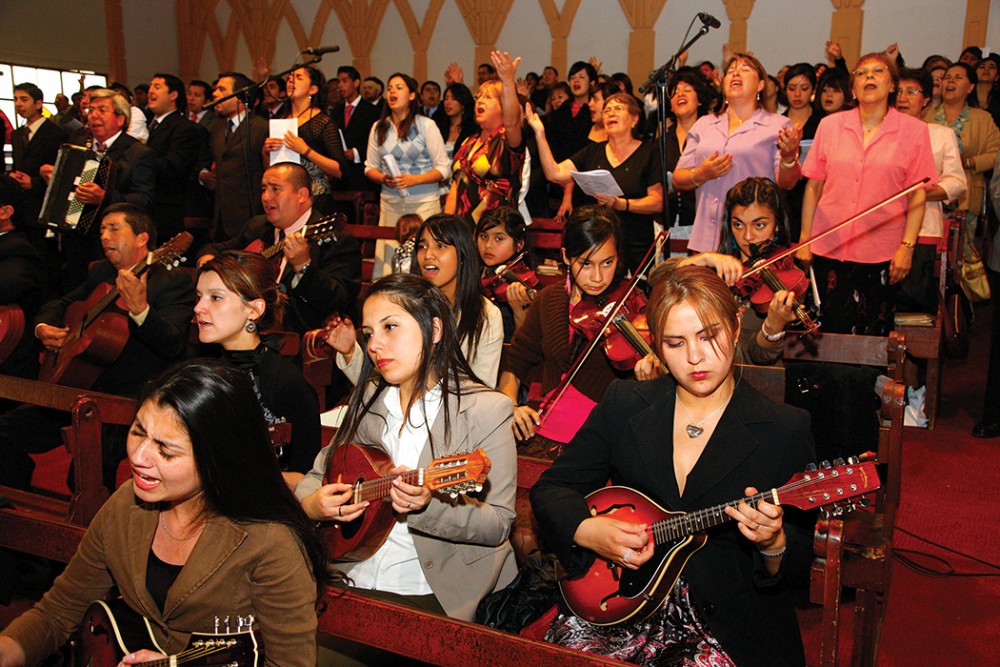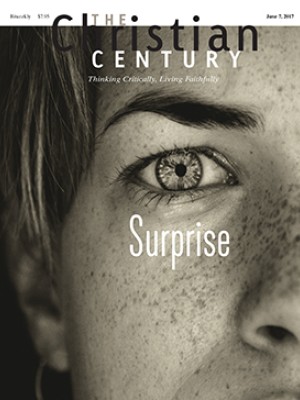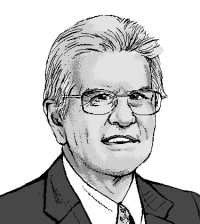Why Chile has Pentecostal bishops
When a revival took root among Methodists, U.S. church authorities demanded that local leaders disavow it. They refused.

When talking to evangelicals in Latin America or Europe, the conversation turns with startling frequency to Chile and specifically to the great revival that began there in the 1970s. Whether through direct influence or as an inspiration, that movement has had a transforming effect far beyond Chile itself. Without knowing that story, we are missing a crucial component of modern global Christianity.
Chile has long been one of the most European parts of Latin America. The country is highly urbanized, with around a third of the national population—some 6 million people—living in Greater Santiago. Today the country is also a high-tech hub. Its long-standing cosmopolitan quality opened the country to foreign religious influences, and the Pentecostal movement had a major impact only a couple of years after the original outbreak in California in the early 20th century.
Read our latest issue or browse back issues.
Surprisingly, the greatest denominational impact of the Pentecostal movement was in the Methodist Episcopal Church. Missionaries and church authorities from the United States were horrified by the chaotic upsurge of spiritual signs among Methodist believers, and they demanded that the local leader, Willis C. Hoover, disavow the movement. He refused, and the resulting schism produced the country’s very influential Pentecostal Methodist Church. It has retained the familiar titles and hierarchy of the U.S. church, so today it has powerful Pentecostal bishops. (These churches also practice infant baptism.) Although little known in the United States, Hoover is still regarded as a pivotal figure in Latin American church history.
Protestants (evangélicos) long remained a small minority, making up less than 5 percent of Chile’s population as late as 1970. Matters changed rapidly during years of political and social turmoil. In 1970, the country elected a Marxist-led government headed by Salvador Allende, which was overthrown by a military coup on September 11, 1973—a date that still has a profound resonance across Latin America. Military leader Augusto Pinochet presided over an era of savage repression and jarring economic reforms, remaining in office until 1990.
The political crisis sharply divided Protestants and Pentecostals, creating divisions between churches, and especially between leaders and the grass roots. For decades, Protestants had resented the tight alliance between the ruling elites and the nation’s Roman Catholic Church, which enjoyed abundant legal privileges. Chile was one of the last countries to retain the old custom of a national religious celebration, the Te Deum, which naturally was held under Catholic auspices. Accordingly, many ordinary Pentecostals favored leftist causes, and that movement began to boom under Allende.
But church leaders leaned toward the military government, and they were rewarded appropriately. In 1975, the government created a special patriotic Service of Actions of Grace, attended by Pinochet himself. Today the Te Deum Evangélico remains one of the key ritual events of the Protestant year, attended by presidents and dignitaries.
Although these events might have fatally divided the churches, repression had little effect in curbing church growth. Charismatic and Pentecostal churches boomed, and by no means only on the Protestant side: perhaps a quarter of all Chile’s Catholics today are charismatic. But the Pentecostal churches, with their emphasis on spiritual gifts, were the most visible signs of revival. To borrow the title of a book by Martin Lindhardt, in those congregations, believers found “power in powerlessness.”
Nor were the churches entirely otherworldly in their orientation. In an age when overt political outlets were largely closed, ordinary people turned to the churches for companionship and community, over and above any spiritual comforts. Churches became deeply involved in local activism, campaigning for neighborhood improvements. Churches thus filled the cultural void left by the suppression of civil society. These community enterprises gave the Pentecostals a foundation on which to build following the restoration of political democracy.
Protestant numbers swelled, leading some optimistic observers (especially in the United States) to predict the imminent emergence of a Protestant Chile. The present reality falls far short of that, with Protestants claiming just 15 to 20 percent of the population. But Catholic numbers have declined steeply, to around 55 percent, and over a quarter of Chileans now declare themselves to be secular, atheist, or nones. As a result, Protestants represent a solid share of what is now a three-way religious division.
The Pentecostal role in the religious economy is nowhere more apparent than in the mighty Jotabeche Church, one of the world’s largest Christian congregations. Since 2007, it has separated from the old Pentecostal Methodist Church and today is known as the Evangelical Cathedral of Chile. It seats 19,000 in its main facility, with 100,000 more followers meeting at dozens of satellite churches. For all the divisions and schisms through the years, Jotabeche proclaims a potent evangelical presence in the heart of Chile.
A version of this article appears in the June 7 print edition under the title “Charismatic in Chile.”







